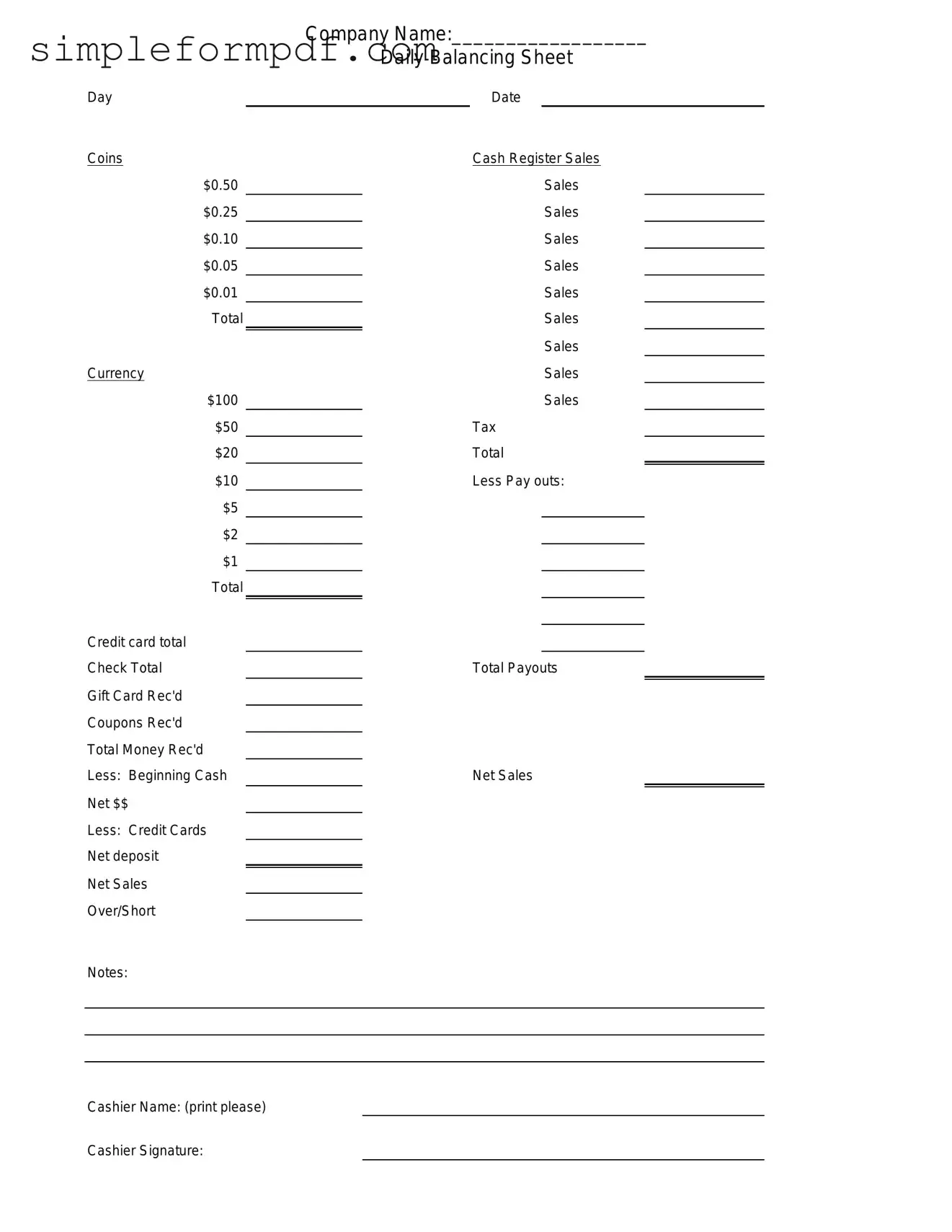Cash Drawer Count Sheet PDF Form
The Cash Drawer Count Sheet is a financial document used by businesses to track the amount of cash in their registers at the end of a shift or business day. This form helps ensure accuracy in cash handling and aids in identifying discrepancies. To maintain financial integrity, it is essential to complete this form accurately; you can start by filling it out using the button below.
Launch Editor

